The next product from the prize bundle to be subjected to my stringent critique is the Multicomp Pro MP730026 3.75-digit handheld Bluetooth Low-Energy-enabled digital multimeter. This unit is listed at a price of US$38.57 through Newark and AU$77.98 inc GST through element14 Australia, with a special promotional price bringing this down to AU$59.87 inc GST which also qualifies for free shipping. This multimeter offers a 600V CATIV and 1000V CATIII safety rating, 6000-count autoranging display, with true RMS measurement capability, supporting the measurement of DC/AC Voltage, DC/AC Current, Resistance, Capacitance, Frequency, Duty Cycle, Temperature, Non-Contact Voltage and offers Bluetooth Low-Energy connectivity. It offers more than most entry-level multimeters and seems to be agreeably priced given its capabilities.
In this review, I will overview the unboxing process, share some opinions of what I think about the meter when in use, verify instrument performance across several types of measurements, provide a full teardown and demonstrate the mobile app that can be used with the multimeter's Bluetooth Low-Energy connection.
Unboxing
The unit comes in a brown cardboard box with Multicomp Pro labelled on the top left corner. Along one side of the box, there is the serial number sticker (not pictured), and along the other, there is the California Proposition 65 warning label (not pictured). Apparently the DMM comes in two versions - EU-UK and US, which apparently differ (according to the datasheet) by the inclusion of a 60mV range in the EU-UK version. However, as we will discover later, this is not necessarily the case, as this "US" version device also has the 60mV range selection. The device is Made in China, carrying a number of approvals including CE, FCC and UL. Unexpectedly, the batch number appears to be missing.
Inside, the multimeter and accessories are packed in separate plastic bags. It is a fairly close fit, but there is no additional padding for protection, so shipping with a protective outer carton is necessary.
The inclusions include a user manual booklet, a set of test leads, a thermocouple (terminated in banana plugs), alligator clip adaptors for the probes, a 9V battery, a small Philips screwdriver for opening the battery compartment and the multimeter itself.
The unit looks good in its leafy-green coloured protective skin. The meter looks just like many others, with LED warning indications along the top, a large LCD display, various push-buttons, a function selector knob and recessed shrouded banana sockets at the bottom. The top edge of the meter offers a "torch" functionality and non-contact voltage detection. The rear of the meter provides a single-position kick stand to prop the meter up into a more comfortable angle.
The battery compartment comes open, releasing the compartment and the kickstand. The battery compartment screw is not captive, so be careful not to lose it. The battery slides into the holder at the rear with the plastic enforcing polarity. Once this compartment is installed back into the meter, two spring contacts touch the battery terminals - a much more reliable method of contact compared to using 9V battery snaps which have a habit of disintegrating over time. The battery date code seems to suggest January 2020 - I hope this is not an expiry date!
The supplied test leads have cables which are on the thin side, especially when compared with higher-end DMMs. The probes are designed to be multifunctional, with the open configuration rated to CATII 1000V safety rating. Likewise, the alligator clips can be screwed onto the probe tips, rated for 10A CATII 1000V. Installing the shrouds over the probes, leaving the tips exposed upgrades this to CATIII 1000V. Of note is that there is no configuration which is CATIV compliant, thus measurements should not be undertaken in CATIV overvoltage situations using the supplied leads.
The thermocouple included is a standard bare-bead K-type thermocouple terminated in 4mm banana plugs. This particular one has printing on its packaging with a number of spelling mistakes - perhaps expected given its Chinese origins.
In Use
In basic use, I found this multimeter to perform as I would expect. Compared to the most basic 19-range "DT830-style" 3.5-digit meters, this one definitely feels better built with greater capabilities, higher quality test leads and higher precision. However, for those who own a number of multimeters and are "enthusiasts", there are definitely some noteworthy observations to be made.
The display had large digits with good contrast, with the convenience of having the units of readout showing along the bottom as is the case with most auto-ranging DMMs. The update rate is roughly three times a second, although this does depend on the function being used. When in the capacitance mode, readings can take up to five seconds to obtain. In the frequency/duty cycle mode, it can take more than a second especially to measure lower frequency signals. The auto-ranging behaviour of the DMM seems to be decisive, but slow, sometimes taking half a second with the probes connected to decide which range to use. The probes themselves also don't seem to make clean contact with resistor legs without addition of pressure, thus fluctuating readings were the result, perhaps due to the shape or plating on the probes. The body of the probes do have a triangular grip cross section, which does help users comfortably grip onto the probe.
Temperature measurements on the DMM are fairly rudimentary, with just 1 degree Celsius resolution and wide error tolerance. Interestingly, if the meter is switched to Fahrenheit, it offers 1 degree Fahrenheit resolution as well, which is nearly twice as fine. Thus logging temperatures in Fahrenheit and converting them to Celsius may provide a finer trend, but in return, the claimed error in Fahrenheit is higher. So for small temperature measurements, you're better off using a higher-end meter, perhaps dedicated to thermocouple usage, but if you're measuring large temperature movements (e.g. a BBQ) then this may work just fine.
There is an onboard buzzer for continuity measurements, the buzzer having a very slight delay when the probes are touched together. It's not big enough to be frustrating, but it is barely noticeable. It should be noted that there is a torch function, but it is shared with the backlight on the display, they are both activated together which can place a draw on the battery. The torch itself is not particularly bright, but it is definitely a handy feature to have in case you're probing in the dark, so I do appreciate its inclusion. The non-contact voltage detector seems to be quite low in sensitivity and does not seem to be adjustable - in my testing, the body of the meter could only be moved about 8mm away from a transformer before the binary-state voltage warning cleared. This makes it less capable for detecting wires buried deeper in walls, at least, without rubbing the meter up against the wall.
The rear of the case offers a probe storage area, although the design means that the sharp tips of the probe do protrude above the top edge of the meter, which is perhaps a little inconvenient. It should be noted that while the unit can measure current, it seems that these inputs are protected by internal fuses which are not auto-resetting, thus care needs to be taken to ensure the probes are connected to the correct position on the meter prior to measurement. The meter does have an auto power-off functionality which beeps to warn you of impending shut-down, then beeps as it shuts down. This, I found, could be disabled by holding down Select while powering up the meter. To re-enable, hold down Range while powering up the meter. The auto-power-off functionality is also disabled when a Bluetooth connection has been established and while a Bluetooth-initiated internal data log (up to 10,000 points) has been initiated. Bluetooth connectivity is enabled by pressing down the Hz/Duty/delta button, with the indicator flashing to indicate waiting for a connection, and solid when a connection is established. This feature automatically times out after 10 minutes of no connection, and even when a connection is established, seems to hiccup occasionally. Bluetooth range, however, was quite good reaching over 8m in my room including obstructions. Compared to other meters, such as those from Keysight, I appreciated that the Bluetooth is integrated into the meter, rather than as a separate module, thus reducing the amount of bulk and batteries necessary.
One particularly odd feature is the beeping of the DMM when it "exceeds" the maximum voltage, which seems also to carry over to the mA range. In this case, I found that above around 590mA, the meter would beep continuously, rather than the expected 600mA. This was enough to immediately wake me from a peaceful sleep, as it was running the test overnight unattended. During long term current measurement tests, the meter did get somewhat warm near the jacks when tested at 9A on the 20A range. It is noted that the unit is not suitable for continuous current measurements at >10A according to the manual.
Compared to higher end DMMs, I do miss having a bar-graph display that is able to visualise how the range is being used and can update quicker than the numerical part of the display. I also miss the ability to perfectly silence the DMM so that it does not beep - this unit beeps when powered on, when a button is pressed, as a reminder prior to auto power off, when auto power off takes place and when the Bluetooth module has timed out making a connection and is being turned off. The noises can be a minor inconvenience depending on where/when you do your work. It's also worth noting that this unit does not come with any certificate of calibration, as higher end meters sometimes do, although this is only of interest if you choose to make high precision measurements which is quite unlikely for such a 3.75-digit meter. There is also no facility to determine the state of the internal battery - so there is a chance you might start using the meter and then suddenly be greeted with a battery low indication without a spare to hand. But perhaps the greatest niggle in this regard is the fact the meter uses 9V cells, which don't have a great amount of capacity and are more expensive than other types - for those looking to make much use of the Bluetooth functionality, this is unfortunate.
Compared to some lower end DMMs, this unit does not have the facility to perform transistor gain tests - it seems to have been omitted from this model and is a possible option according to the outer carton. It would have originally been where the "true RMS" badge is on the meter, but as BJT usage has very much declined along with through-hole components, this is not a great loss.
Instrument Performance
The most important aspect of a piece of test equipment is how it performs - to this end, I had to run some accuracy tests and measurements. This was only possible in any automated way thanks to baldengineer James' reverse engineering of the Bluetooth communications. After modifying his code, I was able to obtain the values over Bluetooth and combine them with values retrieved from more conventional benchtop instruments over LAN/USB. It is noted that the Bluetooth communications do drop out from time to time and individual value spikes have been removed.
Voltage Readback Accuracy
Voltage readback accuracy was measured by generating voltages using a Keysight E36103A power supply (and later, in series with one or two Manson HCS-3102 power supplies). The output is connected in parallel with the Multicomp Pro MP730026 and my (old) Keithley Model 2110 5.5-digit DMM which although not recalibrated since manufacture, was verified against a new calibrated instrument and appears to be still within its error margins. As it is significantly more accurate (greater than an order of magnitude) than the MP730026, error margins were not visualised.
The millivolt range accuracy is stated to be 0.5% + 2 dig (which I assume they mean counts). In this case, it is capable of meeting 0.5% error by about 200mV, and below that, the error percentage increases due to the small values involved. Overall, the reading error seemed to be mostly around 1.5mV of the expected value, so it seems that it meets the claimed accuracy.
The volt range accuracy is also 0.5% + 2 counts, and in this case, the meter was easily able to beat the stated accuracy by quite a margin, mostly staying below 0.15% error. There was some gain error, it seems, in the 60V range which resulted in a discrepancy about 60mV at the top of the range, but when it ticked over to 600V, the range offset seemed to pretty much disappear. The broad bands are due to the "granularity" of the measurement - a voltage of 65.000 can be perfectly represented on the display as 65.00, but 65.00999 for example, may be represented as 65.00 with an error of ~9.99mV. This error is due to the resolution of the meter.
Current Readback Accuracy
Current readback accuracy was similarly performed with the Keysight E36103A providing current to the DMM and Keithley 2110 DMM in series for the mA range. For the A range, more power was necessary, so I employed the Rohde & Schwarz HMC8043 with all channels in series to provide up to 9A. I was not able to use my Rohde & Schwarz HMP4040.04 (which would have been more suitable) as it is currently taken apart, awaiting an attempted repair.
The claimed milliamp range accuracy is 0.8% + 2 counts, and the results seem to show that it easily surpasses the requirement. The maximum error is about 1mA, which is surprisingly good.
The ampere range is similarly quite good, with a stated accuracy of 1.2% + 3 counts, easily achieving under 1.2% error for currents above 1.5A. Three counts on the display would have corresponded to 30mA leeway - the maximum error recorded was under 25mA, thus at least up to 9A current, the meter was better than expected in terms of accuracy.
Input Impedance at High Voltage
Testing of the input impedance and high-voltage handling was done using the Keysight U1461 directly connected to the inputs of the meter.
No harm was done to the meter after a 10-minute soak, with the input of 10 megaohms being verified by the insulation resistance test DMM.
Frequency/Duty Cycle Accuracy
I performed testing on frequency and duty cycle accuracy using signals generated from my Rohde & Schwarz RTM3004, but in all cases from about 1Hz through to 100kHz (the maximum I could get before the loading distorted the waveform significantly), the readout value was correct and within 1-count, thus there was no graph worth presenting. The amplitude necessary to get a good reading, however, seemed to depend somewhat on the duty cycle and frequency, but a 5V amplitude signal seemed to work fine, and 2V more often than not. It was a bit borderline at 1V, however.
Current Measurement Burden Resistance
From measurement using the Earth-Bond resistance feature on my Keysight U1461A, the burden resistance for current measurements is approximately:
- 112.8 ohm for 60/600uA ranges,
- 1.639 ohm for 60/600mA ranges,
- 0.094 ohm for 20A range.
Power Consumption
Power consumption was based on supplying the DMM with a steady 9V DC from a Keysight E36103A power supply, with currents read back from the front panel:
- Measuring DC Voltage - 1.15mA
- Torch/Backlight On - 22mA
- Bluetooth Logging - 7.58mA
Depending on what types of batteries you use and how you use the meter, the run time can vary significantly. Most alkaline 9V batteries have about 500mA of capacity - for regular measurements, the unit would run around 435 hours. When Bluetooth logging, this drops to just 66 hours. If the torch is on, then 23 hours is achievable. The low-end carbon zinc battery that is supplied with the unit has just under half this capacity - during testing of the instrument performance, I completely exhausted the battery.
Teardown
As usual, the curious would be interested in what is inside this DMM - I know I was, so I took it apart.
To take apart this DMM requires first removing its protective skin. This is fairly well "attached" by the tongue-and-groove around the edge of the meter and the tight fit. I also removed the rear battery compartment (which also releases the stand) for safety. The side of the meter apparently has 1917 on it - so perhaps built in Week 17 of 2019. Without the skin, the meter feels much lighter and a little hollow.
A peek inside the meter shows that it is quite empty inside, with everything impressively integrated into a single chip aside from the Bluetooth. The input jacks at the bottom have some insulation, the current measurement shunts are visible as well. The fuses appear to be 3AG-sized, with two non-resettable fuses - one 1A rated and the other 15A rated. There also seems to be a position for a transistor test socket which is not populated.
The fuses themselves do not appear to be of a reputable make - while they carry some approval logos, I'm not sure these are 1000VDC rated fuses as they claim, as some have found fuses which are repurposed from regular UK power plug mains applications, sometimes without the silica sand filling necessary to achieve the high rupture capacity. I found the Dissmann brand particularly amusing, because Bussmann is a known reputable brand and it seems to be a direct rip-off of it. Looking for properly rated fuses, it was not possible to find anything in element14's catalogue that would physically and electrically fit the 15A position. The fuse for the 1A position would cost about 16% of the whole cost of the DMM - so I suppose this is understandable but perhaps still a safety concern. The fact they are non-resettable is an inconvenience, as you're likely to blow one sooner or later because you forgot to change the position of your test leads.
The build quality of the meter also seems to leave a bit to be desired - here we see two SMD capacitors being "bodged" into place, and two others nearby which have been reworked, along with flux residue. Not the worst job I've seen, but perhaps not that pretty.
The heart of this meter is a DM1106EN chip, which seems surprisingly popular amongst new multimeters. In fact, I didn't realise that the UNI-T UT210E that I have probably has this exact same chip in it, which in itself seems to be related to the DTM0660L which itself seems to be a clone of the Hycon HY12P65/66. This is good news as apparently, this means there is some customisability if you're willing to hack at the EEPROM. The Bluetooth module appears to be using a Telink Semiconductor TLSR8261 BLE SoC.
It turns out, this meter is a rebadged Owon OW18B Series 3 DMM, made by Fujian Lilliput Optoelectronics Technology Co. Ltd. Even with this knowledge, it's interesting to see that if I wanted to purchase the Owon branded meter, I'd have to pay more ... so just because it's been rebadged and gone through element14's hand does not mean that they've added to the price!
Mobile App
The unit is supported by a desktop app, but this only works with their special Bluetooth dongle, and is Java based. As a result, it was no great use to me. However, their "Multimeter BLE" Android app can be used with most phones and tablets that have BLE support and can be freely downloaded from the Google Play store. The app is somewhat dated, but it still works with my Android 7.0-based phone. The app runs only in landscape mode and at the point of review, was up to version 1.5.4.4 with a copyright date of 2015.
The software starts up with the multiple-device display mode. Tapping on the device heading allows for you to scan for devices and connect to your DMM. The device name is BDM, but can be renamed through a long-press.
Once connected, it is possible to view the reading in single-screen or dual-screen mode. In the single-screen mode, it is possible to remotely press the four meter buttons via the Android phone and turn on the text-to-speech readback of multimeter values, which can be good for "eyes-off-the-screen" probing. This screen also allows you to configure the ability to record data into its internal memory with the Bluetooth connection disconnected for power savings.
The unit is able to collect up to 10,000 readings "offline". I tested this overnight and it worked as expected, but the downloaded data number is represented strangely - doubled as it contains time and value pairs, but also it seemed to read more than the number of values available.
The other screen of concern is the graphing screen which shows a table of data values and a plot. This table of values is actually being recorded from the DMM and can be saved to file. Existing file records can be loaded for plotting.
From this screen, it is possible to change the logging interval, limit the recording period and change certain settings. The data export is CSV formatted, but the files are somewhat strange -
Viewing them in a text editor with special characters visible, it is both tab and comma delimited, which means that importing it in Excel results in some funny behaviour where the numbers are not recognised as numbers, but are text due to the tab characters. This means some pre-processing of the .csv files will be necessary to make it usable. Rather than fuss with this, I prefer just using James' code earlier for working with the meter.
Conclusion
The Multicomp Pro MP730026 3.75-digit handheld Bluetooth Low-Energy-enabled digital multimeter is pretty much what I expected from a relatively inexpensive handheld DMM. It has a decently large display, auto-ranging, a whole host of functions including DC/AC Voltage, DC/AC Current, Resistance, Capacitance, Frequency, Duty Cycle, Temperature, Non-Contact Voltage and offers Bluetooth Low-Energy connectivity which is a step-up from the most basic entry-level DMMs. It has a CATIV 600V and CATIII 1000V rating, although the supplied leads only go up to CATIII 1000V and feel slightly thinner than I expected. The meter performs as you might expect for a meter in this price range - a moderately large LCD segment display updating at about three times per second, longer in other modes, with a sluggish but decisive autorange. I found it quite useable and the instrument performance tests showed that it met and in many cases bettered the accuracy specifications on the box. Its green-coloured skin is unique and fits well.
There is, however, a list of downsides - none of which is unusual for a DMM in this price range. For example, the temperature read-out lacks resolution and the meter has a beeper that does not seem to be able to be disabled. Capacitance read-outs are also slow, with a small delay in the continuity test beeper being evident. The kick-stand has just a single position, while the probe holders leave the tips exposed. High current measurements above 10A cannot be made continuously. The display lacks advanced features, such as a bar-graph, battery level or more rapid updates. The desktop app only functions with their own Bluetooth adapter which is not included, while the mobile app is a little dated and awkward to use with an unusual .csv export "bug". The internal build quality of the meter is slightly lacking and the unit feels slightly light and hollow, while the fuses used are of questionable reputation and are not of the self-resetting variety. The use of 9V batteries which are more expensive and have lower capacity is also a disadvantage if long-term logging is to be used. All seem to be typical issues, not least in part, because many of the meters now share similar internals being based around similar ICs.
Considering its price, it actually offers a good amount of functionality and flexibility and would make a good DMM to choose if you're looking to buy a decent first DMM, an inexpensive ordinary DMM to carry around for emergencies with the possibility of data logging (e.g. for use in an environment with a high risk of theft, loss or damage) or upgrading from one of the bottom-end DT830-style units. If you're a serious, professional DMM user, perhaps it's worth saving a little more and reaching for something from an established brand that might have more features and perhaps improved safety features.

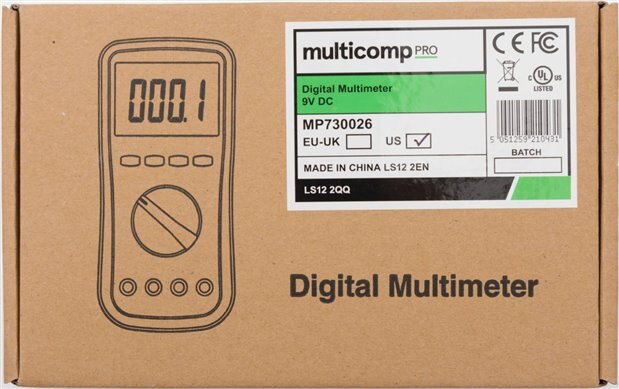
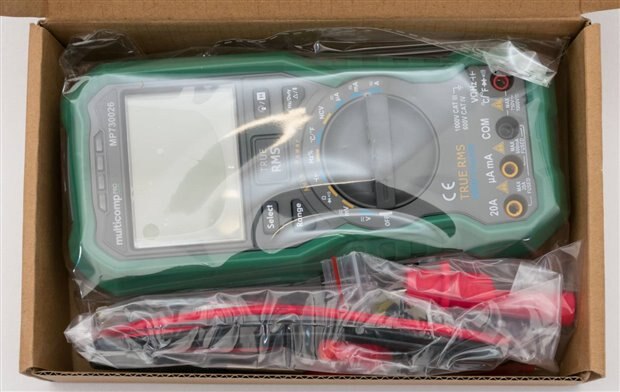
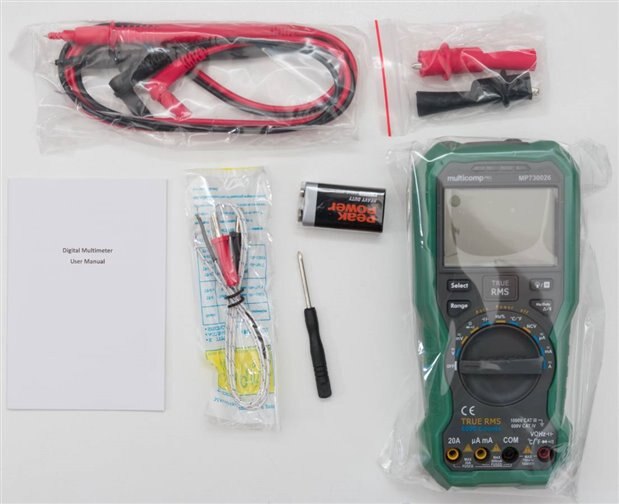
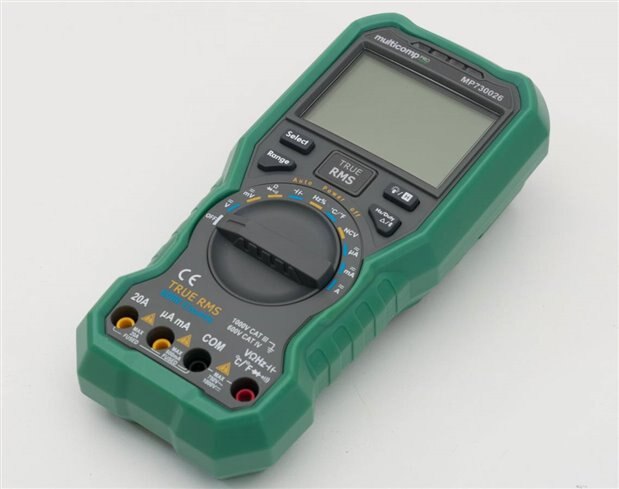
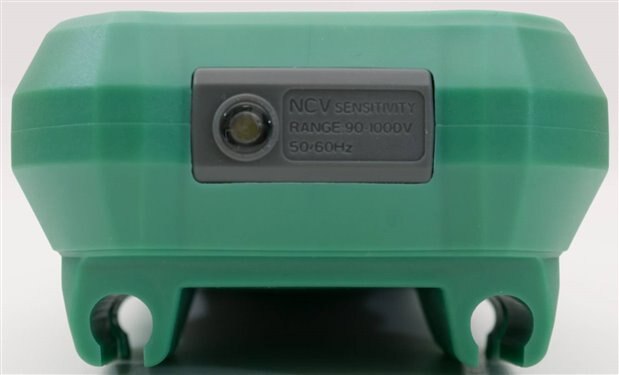
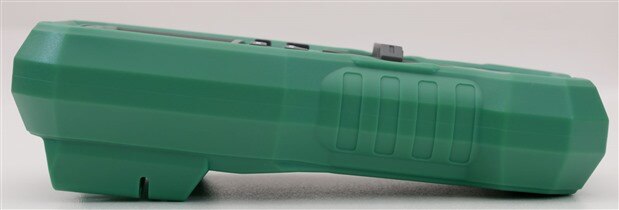
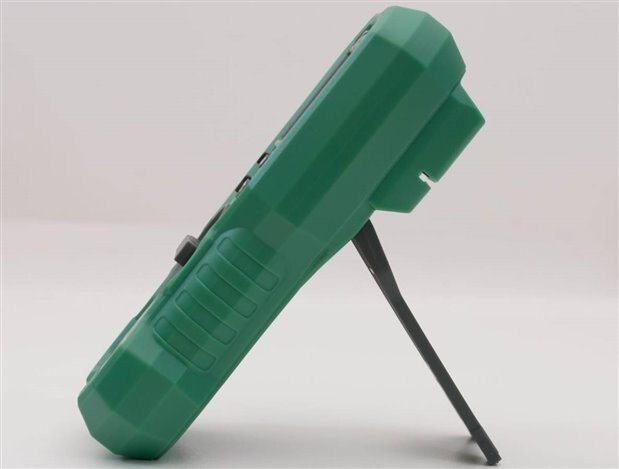
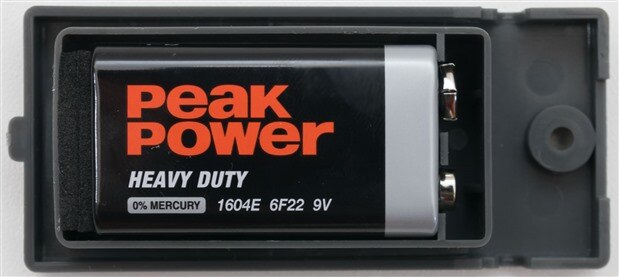
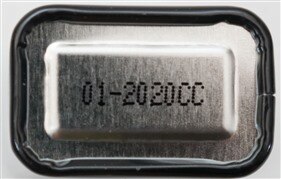
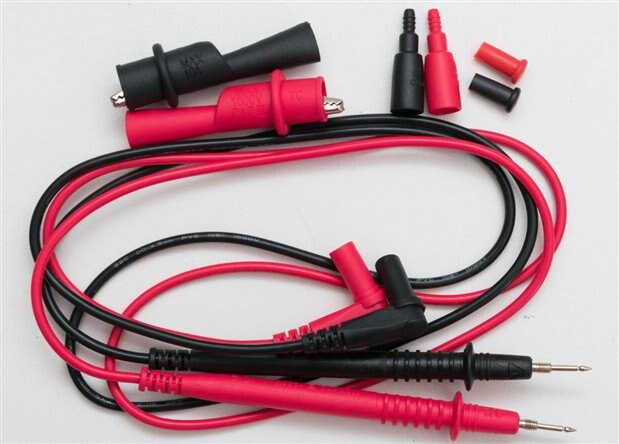
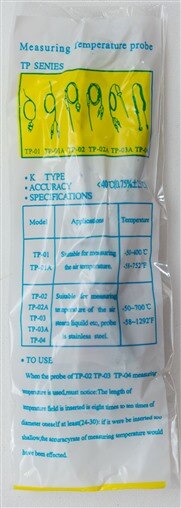

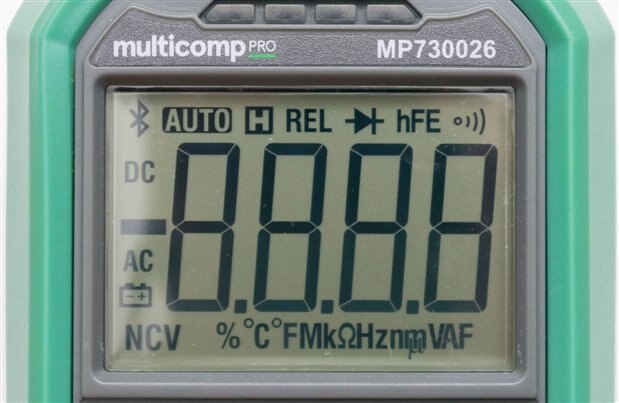

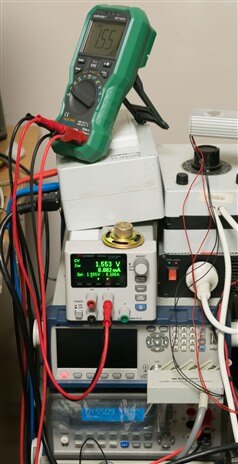
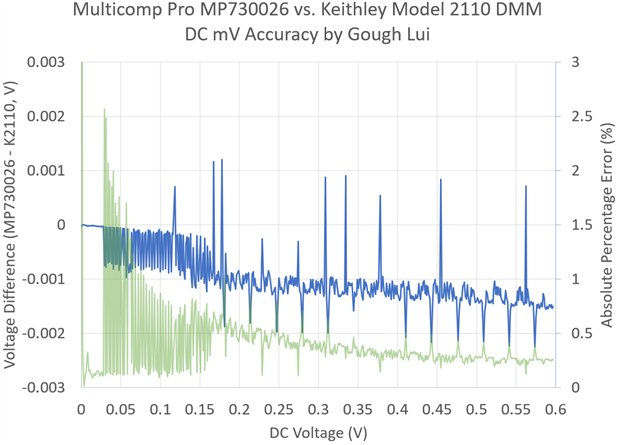
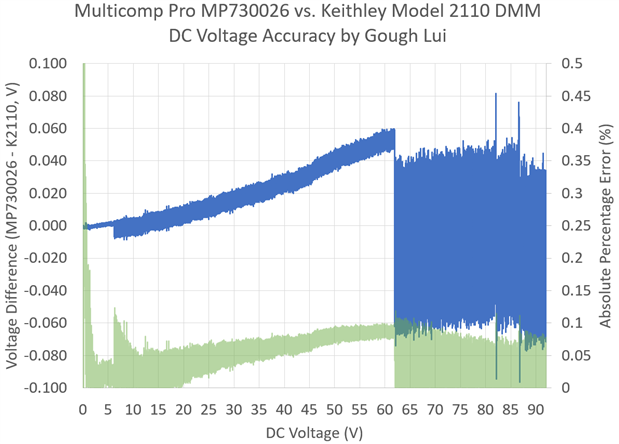
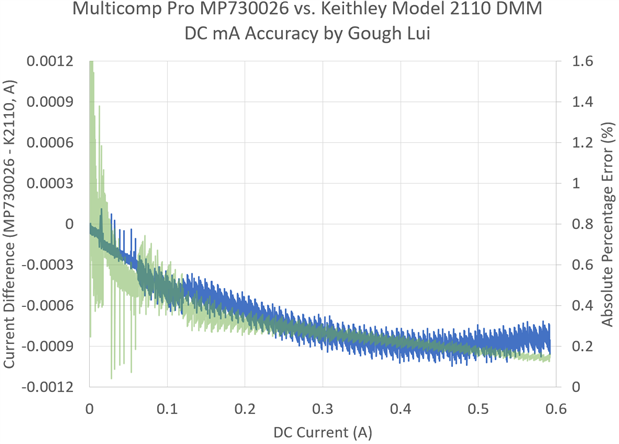

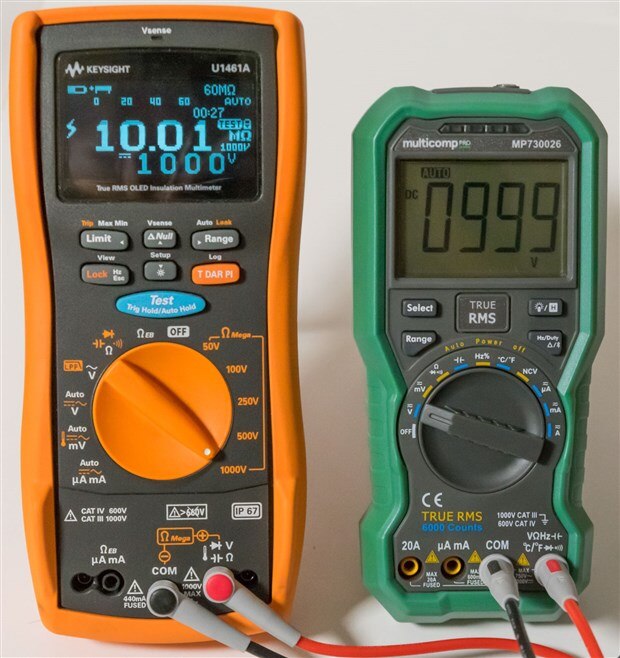
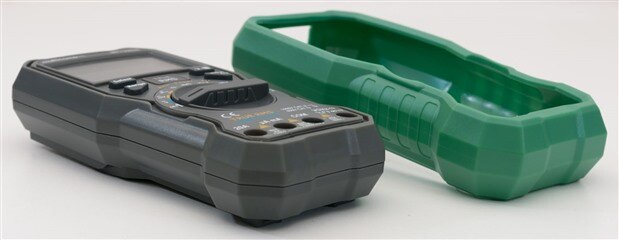
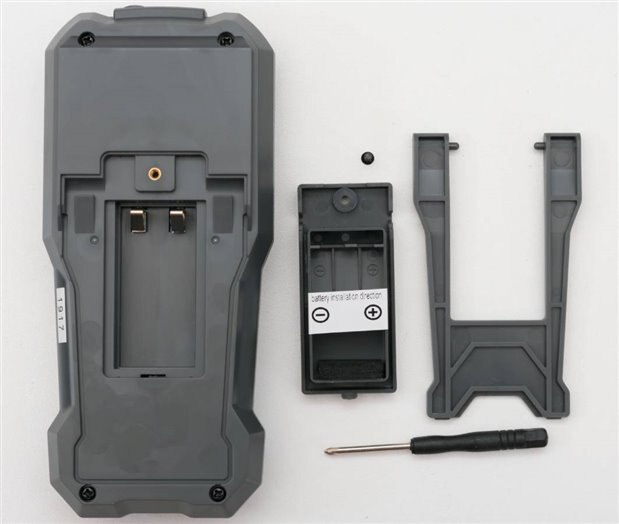
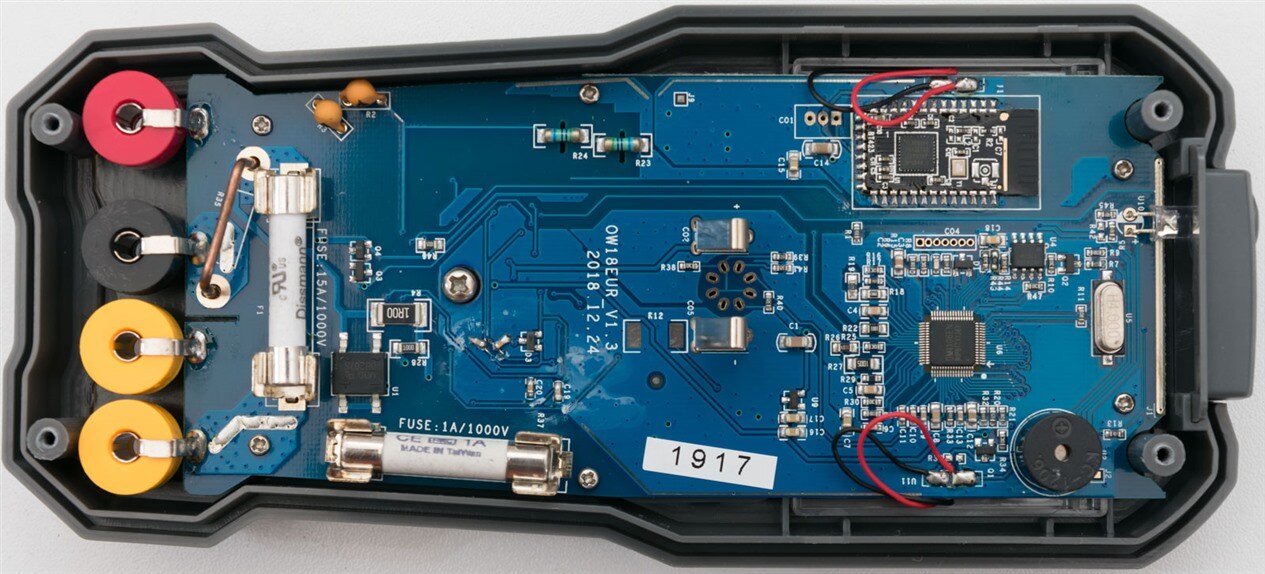
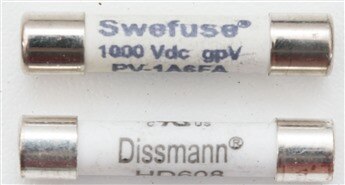

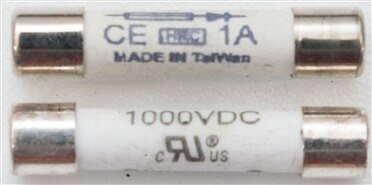
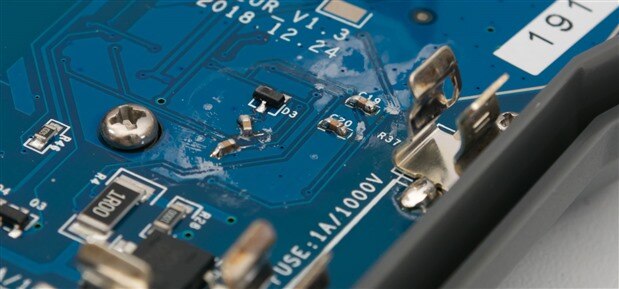



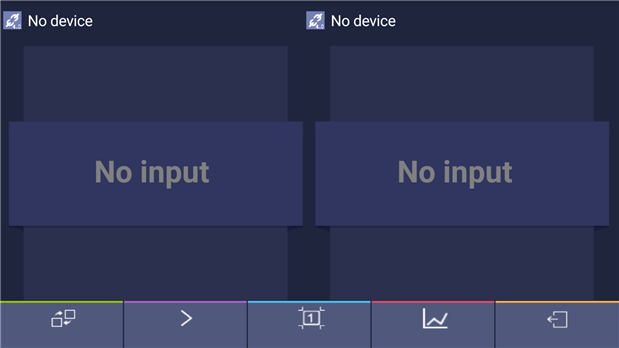
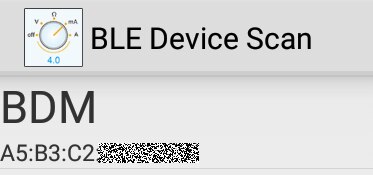
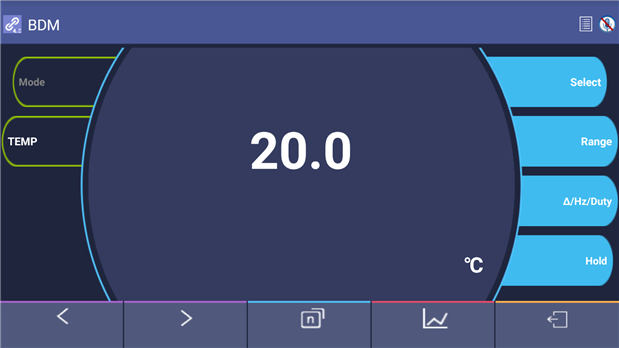




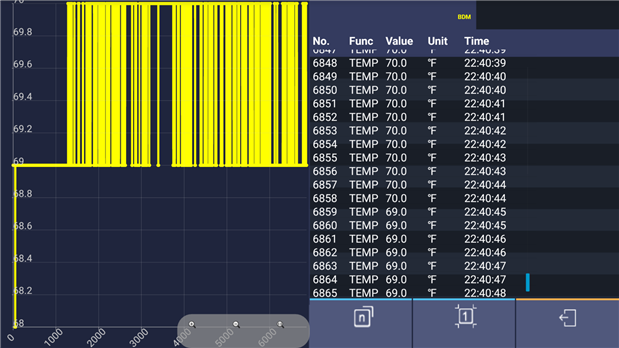



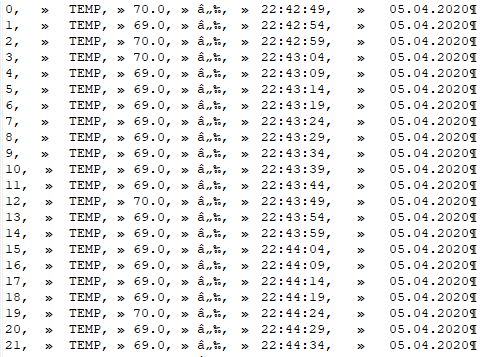
Top Comments
-

javagoza
-
Cancel
-
Vote Up
0
Vote Down
-
-
Sign in to reply
-
More
-
Cancel
-

Gough Lui
in reply to javagoza
-
Cancel
-
Vote Up
0
Vote Down
-
-
Sign in to reply
-
More
-
Cancel
-

javagoza
in reply to Gough Lui
-
Cancel
-
Vote Up
0
Vote Down
-
-
Sign in to reply
-
More
-
Cancel
Comment-

javagoza
in reply to Gough Lui
-
Cancel
-
Vote Up
0
Vote Down
-
-
Sign in to reply
-
More
-
Cancel
Children